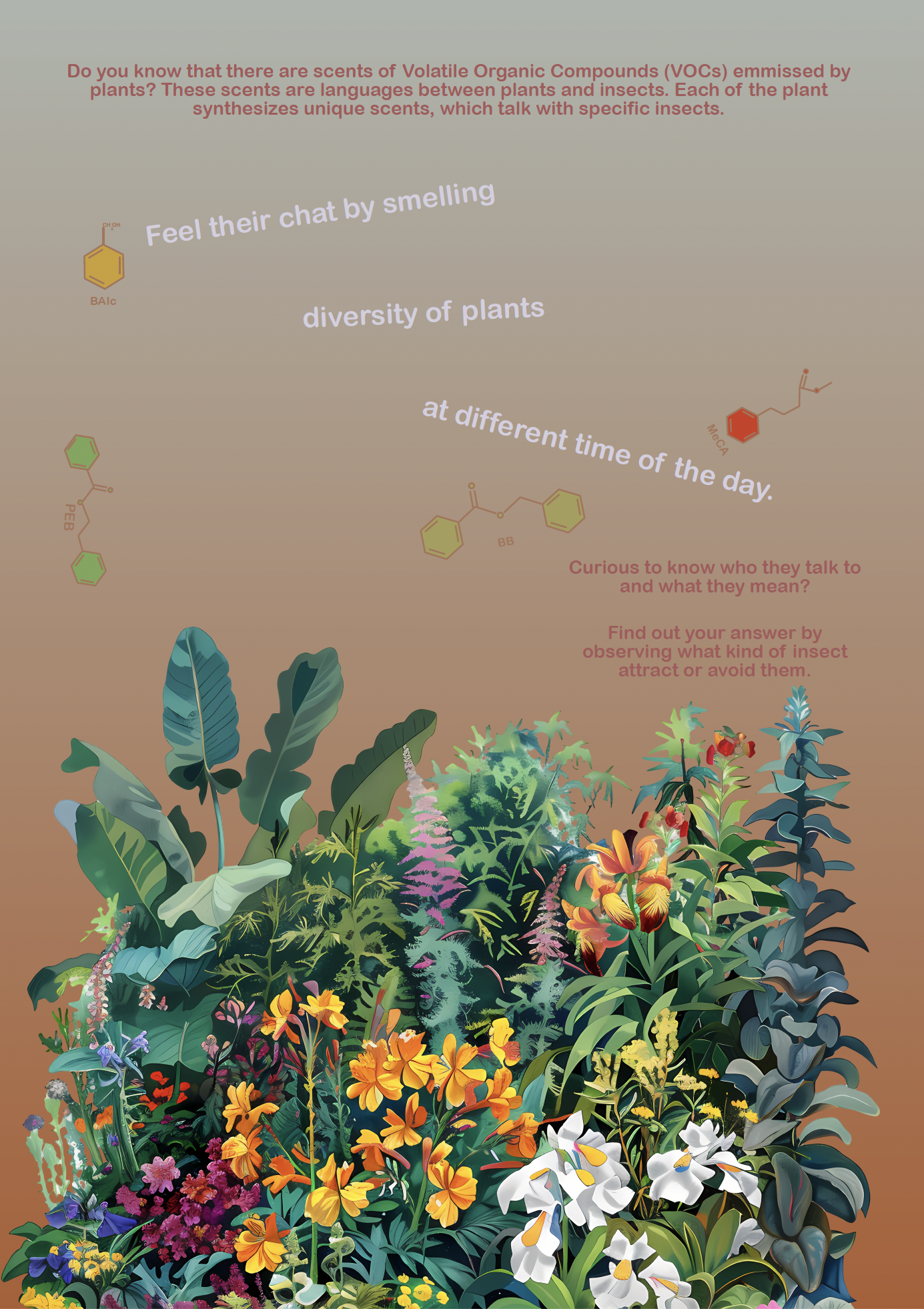Som Supaparinya
Som Supaparinya (1973) lives and works in Thailand. Her work encompasses a wide variety of media, including installation, sculpture, and still and moving images. She explores the social history of Southeast Asia, raising critical questions about power dynamics and colonial legacies. In her instruction, she invites us to reconnect with plants through their mode of communication with their environment, the olfaction.
Fun Fact
Many plant species, particularly in the Lamiaceae family, repel insects and herbivorous mammals thanks to their highly volatile chemical compounds. While these compounds, called aromatics, are very effective in this defense, they have the opposite effect on humans; around the world, we cook many species of this family, such as mint, thyme, oregano, marjoram, sage, basil, or lavender. But our interest does not stop at this family of plants; others contain chemical defense compounds that are just as attractive to us, such as pepper, chili pepper, garlic, onion, or horseradish.
Call to Action
A monoculture with a poor olfactory environment is easy prey for a pest, while biodiversity promotes a more complex olfactory environment that is more difficult to decode. Olfactory pollution caused in particular by hydrocarbons or phytosanitary treatments disrupts the behavior of insects. These chemical mediators are fascinating because they make it possible to control the pressure of certain pests on crops by promoting the emission of certain VOCs. This could be an alternative to the use of pesticides, but we still need to identify the nature of the olfactory message emitted, understand the mode of action of these VOCs and be able to reproduce this message at will. So let's plant aromatic herbs on our balconies or in the city's collective gardens! Building containers containing communities of various varieties of aromatic plants promotes biodiversity and, consequently, the environment.
Riddle
How can you protect yourself from the sulphur compounds emitted when cutting an onion?
A) By holding your breath
B) By holding a spoon in your mouth
C) Using a butter knife
D) Leave a damp cloth next to the onion
Instruction
